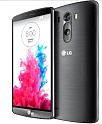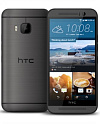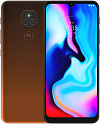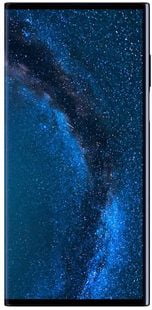 Huawei Mate X
Huawei Mate X
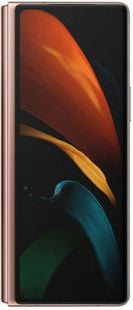 Samsung Galaxy Z Fold 2
Samsung Galaxy Z Fold 2
Comparision Huawei Mate X vs Samsung Galaxy Z Fold 2
Grade
Top specs and features
AnTuTu
Main camera resolution
Android Version
Battery capacity
Pixel density per screen inch
Description
Camera Comparison In DxOMark tests, Huawei Mate X scored There is no data points. Samsung Galaxy Z Fold 2 scored There is no data in the DxOMark camera test.
Resolution of the main camera sensor for Huawei Mate X 40 MP, versus 12 MP for Samsung Galaxy Z Fold 2. Main camera aperture at Huawei Mate X f/1.8. At Samsung Galaxy Z Fold 2 aperture reaches f/1.8. The first smartphone has a Dual LED flash, the second one has a Dual LED flash.
The resolution of the front camera for the first device is There is no data MP vs. 10 MP for Samsung Galaxy Z Fold 2. As for aperture, the first smartphone has f/There is no data versus f/2.2 for the second.
Performance comparison. Huawei Mate X has the HiSilicon Kirin 980 chip installed. The processor frequency reaches 2.6 GHz. ARM Mali-G76 is responsible for graphics. The frequency of the graphics core reaches 700 MHz. Huawei Mate X has 8 GB of RAM installed. The maximum amount of RAM for this model reaches 8. The RAM version is DDRThere is no data.
Samsung Galaxy Z Fold 2 is equipped with Qualcomm Snapdragon 865 Plus. The processor frequency is 3.1 GHz. In terms of graphics, the Adreno 650 kernel is used here. The video core is capable of operating at a frequency of up to 650 MHz. The machine is equipped with 12 GB of RAM. RAM version for Samsung Galaxy Z Fold 2 DDRThere is no data.
Tests in benchmarks. In the AnTuTu benchmark, Huawei Mate X scored 370981 points out of 911349 points possible. Samsung Galaxy Z Fold 2 scored There is no data on AnTuTu.
Comparison of displays. On board Huawei Mate X installed OLED screen matrix. The display resolution is 6.6 inches. The pixel density reaches 413dpi screen.
Huawei Mate X's screen refresh rate is 60 Hz. And the brightness of the display reaches There is no data cd/m².
Samsung Galaxy Z Fold 2 has a AMOLED matrix with a diagonal of 7.6 inches. Here the pixel density is 375 ppi. The screen refresh rate is 120 Hz. And the display brightness reaches 720 cd/m².
Equipment and general characteristics. Huawei Mate X came out in There is no data. Samsung Galaxy Z Fold 2 submitted There is no data.
The first smartphone has an IPThere is no data class of protection against dust and moisture, compared to the IPThere is no data class of the second device.
Huawei Mate X supports up to 2 sim cards, versus 1 for Samsung Galaxy Z Fold 2.
Huawei Mate X weighs 295 grams, versus 279 grams for Samsung Galaxy Z Fold 2. The thickness of the first smartphone is 5.4 mm, versus 6.9 mm for the second one.
Huawei Mate X has USB version 3.1 and Samsung Galaxy Z Fold 2 has got 3.2 USB version. The first smartphone is running 9 version of Android. The second device has the There is no data version of Android installed. Huawei Mate X is capable of supporting the 802.11 a/b/g/ac Wi-Fi version. Samsung Galaxy Z Fold 2 supports the There is no data Wi-Fi version.
The first smartphone supports memory cards up to 256 GB, the second up to There is no data GB.
Why Huawei Mate X is better than Samsung Galaxy Z Fold 2
- Main camera resolution 40 MP против 12 MP, more on 233%
- Pixel density per screen inch 413 ppi против 375 ppi, more on 10%
Huawei Mate X vs Samsung Galaxy Z Fold 2: highlights


Performance
Display
Camera
Battery
Other
Main characteristics
Interfaces and communications
FAQ
How do Huawei Mate X and Samsung Galaxy Z Fold 2 perform in benchmarks?
According to the AnTuTu benchmark, Huawei Mate X scored 370981 points. Samsung Galaxy Z Fold 2 scored There is no data on AnTuTu test out of 911349 possible.
What camera do smartphones have?
Resolution of the main camera sensor for Huawei Mate X 40 MP, versus 12 MP for Samsung Galaxy Z Fold 2.
The front camera of the first smartphone received a resolution of There is no data MP, versus 10 MP of the second.
Which accumulator is better for Huawei Mate X or Samsung Galaxy Z Fold 2?
The battery capacity of Huawei Mate X is 4500 mAh, versus 4500 for Samsung Galaxy Z Fold 2.
What kind of memory?
As for the built-in memory, it is 512 GB for the first device, and 512 GB for the second.
What screen do smartphones have
The screen of the first smartphone is equipped with a OLED matrix, the second with a AMOLED matrix.
Which processor is better - Huawei Mate X or Samsung Galaxy Z Fold 2?
Huawei Mate X has HiSilicon Kirin 980 on board, the other has Qualcomm Snapdragon 865 Plus.
What is the screen resolution?
The display resolution of Huawei Mate X is 6.6 inches, versus 7.6 inches for Samsung Galaxy Z Fold 2.
How much do they weigh?
Huawei Mate X weighs 295 grams, versus 279 grams for Samsung Galaxy Z Fold 2.
How many SIM cards are supported?
The first smartphone can support up to 2, versus 1 for the second.
When did the sales start?
Huawei Mate X was announced in There is no data. Samsung Galaxy Z Fold 2 in There is no data.
What operating system version are you using?
Huawei Mate X 9 has the Android version, Samsung Galaxy Z Fold 2 There is no data has the Android version.
How much memory can be installed on smartphones?
Huawei Mate X supports memory cards up to 256 GB and Samsung Galaxy Z Fold 2 up to There is no data GB.
What kind of moisture protection?
IPThere is no data of Huawei Mate X versus IPThere is no data of Samsung Galaxy Z Fold 2.





























